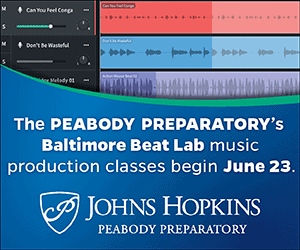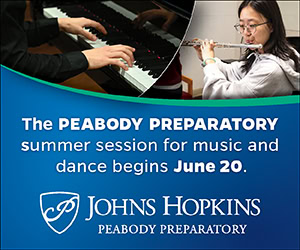/ News Posts / Recruiting and Retaining Students
Build It and They Will Come
Recruiting and Retaining Students
By NAfME Member Lori Schwartz Reichl
This article was originally published in the March 2017 teacher edition of In Tune Magazine.
“Do what you do so well that they will want to see it again, and bring their friends.” — Walt Disney
As music directors, we are walking advertisements for our programs. We are often the most public figures in our schools. Our actions, attitudes, beliefs, and words are an indication of the quality of music education we offer our students, the school, and the community. The words recruitment and retainment tend to be used more when a music program is in trouble. However, the most successful programs implement these essential efforts each school year and aim to achieve significant results every day.
In your work to build a superior music program, focus on the program’s quality rather than the quantity of students in it. Build it with passion, positivity, and pride. Concentrate on proficient instruction and favorable communication. Be prepared for each class, rehearsal, and performance with a detailed plan, desired learning objectives, and a tangible outcome. Be positive in your interactions with others. Be persistent in coordinating rehearsal routines, managing behaviors in the classroom, and teaching fundamental musical concepts. However, don’t forget the importance of getting your ensemble out of the building to be seen and heard within the community. Ultimately, the quantity of students in your program will increase when the quality of the program becomes your top priority and an appreciation is formed by students, parents, colleagues, and administration.
In your work to build a superior music program, focus on the program’s quality rather than the quantity of students in it.
Students aspire to be part of greatness. This aspiration can start at a young age when they watch their siblings perform music, or it can occur later when they watch their peers experience musical magic in school. When students trust that their teacher is knowledgeable, fair, and firm, they are more inclined to demonstrate respect, follow instructions, listen appropriately, and show appreciation. When they achieve a sense of community in their music program, they are motivated to maintain it (see November’s column). This motivation will inspire students to invite their peers to join the program, too.
I’m overjoyed when a student who has never been a participant in band wishes to do so. Each fall I encourage musicians to bring a friend to a rehearsal, regardless of whether the student has ever played an instrument. These students observe a rehearsal with wonder. Upon interest and support from his/her family, the student begins to study an instrument privately with me or an instructor for a period of time. Once the beginner’s skill set has reached a satisfactory level, he/she may participate in band rehearsals and the full commitments of the program.
Some of my most talented musicians were inspired to join band through this observation opportunity. Kelsey began learning horn in 7th grade, served as section leader, and was selected for All-State Band in high school. In 7th grade, Trung began learning clarinet, served as drum major in high school, was appointed first chair clarinet in high school and college, and became a music educator, too. The list is rather long and quite impressive!
One of my favorite performances each year is to travel to an elementary school with my band members dressed-up in costume, to perform pep tunes at the Halloween parade. The younger students are in awe of the older musicians, their instruments, and the multifarious costumes. I’ve conducted the band dressed as Big Bird, Pocahontas, and a handful of other characters all for the sake of sparking excitement in future musicians.
Parents cherish excellence. When a music director is consistent in his/her communication, management, organization, and tutelage, it is evident in the performance and behavior of the musicians. Parents appreciate such efforts. A parent may encourage his/her child to join a performance ensemble simply based on the reputation of the music director or the accomplishments of the program. Parents are more willing to volunteer their time to assist a program when they recognize its core values.
At the beginning of each school year, I distribute a Parent/Guardian Volunteer Interest Sheet. Parents are encouraged to select musical events for which they would be interested in chaperoning or assisting. Often if a parent is skeptical about the significance of the program, he/she will volunteer to observe firsthand. These parents’ unsureness is quickly transformed to amazement when they see the positive behavior of the band members and hear the musical talents. These parents become the most vocal to support the band, to express the benefits of the music program for their child, and to solicit others’ support and monetary donations.
Colleagues appreciate collaboration. When a music director has the academic, behavioral, and social needs of the whole child at the forefront of his/her thoughts, the rest of the faculty and staff recognize this. When a common educational goal is achieved, supportive colleagues are more apt to offer assistance to the music program in terms of flexibility, understanding, and/or volunteerism.
I am often astonished at which particular colleagues wish to chaperone a musical event. Colleagues with whom I have little interaction often volunteer. They may have participated in band as a student and want to experience that bond again, they may feel they owe a thank you to me for assistance or flexibility I offered to them, or they wish to witness the positive interactions of students uniting together for one common goal. Regardless, their support is appreciated and it’s important for members of the program to see such collaboration.

Albany, Oregon, USA – November 11, 2013: This part of the parade on Lyon Street and 2nd Ave shows West Albany High School marching band with drummers and Drums highlighted. This large Veterans’ Day Parade is held annually in Albany, Oregon. Photo: iStockphoto.com | GarysFRP
Administrators value professionalism. They will quickly aid the efforts of a music director who can effectively manage a classroom and rely on little reinforcement from others for discipline. Administrators are willing to approve a musical event, support a performance, or budget for requested equipment when they see and hear positive student outcomes. They are eager to display success. They will want to showcase their students’ musical talent and use a performance as a means to promote the school.
I have had administrators say to me, “Could you please have the band perform at (such event), I need the community to hear and see something positive about our school.” I’ve had administrators march a visitor straight to the band room, to allow him/her to observe great behavior taking place in a classroom. Being the dependable heartbeat of the school is vital.
Very few people outside of your classroom will support your music program or recognize its superiority unless you offer a demonstration. Provide the proof! Perform as often as possible outside of the school building. These types of performances don’t require a concert-like atmosphere; they can simply serve as inspiration. Ask the principal of your school or of a local feeder school, the superintendent, the mayor, or a community organizer if your ensemble can perform for an upcoming event. Perhaps your students can play and/or sing “The Star-Spangled Banner,” your school song, a prelude, a processional, or a featured selection. Consider performing at the following types of events:
- Assemblies
- Community festivals
- Competitions or spelling/geography bees
- Fundraisers
- Holiday events
- Pep rallies
- Presentations
- School news programs
To show unity, musicians should always be required to wear the specified full uniform or some type of unified alteration at any performance.
Consider having elementary and secondary musicians perform together. Combine members of several different school ensembles to offer a collaborative performance. Create a side-by-side concert with professional musicians, community members, parents, and/or alumni. Invite administration, local dignitaries, and consistent supporters to these performances.
Recruitment does not have to involve an elaborate performance or presentation. Spontaneous occasions frequently arise for encouraging younger students to learn to play an instrument. For example, when a parent brings his/her younger child to a school event, begin by asking, “Who is this future musician?” followed by “She certainly looks like a trombone player to me!” A conversation is sure to ensue. When you overhear community members talking about educational or extracurricular opportunities at your school or within the district, kindly join the discussion and offer a brief and positive description of such opportunities within the music program. Publicize the accomplishments of your program and its individual members in the news, on television, or through social media.
Make your program visible and heard. Involve the entire school and community in your performances. Over time, instead of asking to perform for events, you will be invited to do so. More students will join and remain, parents will appreciate you, colleagues will support you, and the administration will value your positive impact on the school. If you build a superior music program, the musicians—and their supporters—will be sure to come!
About the author:
 NAfME member Lori Schwartz Reichl is a music educator and writer. Gain inspiration from her at makingkeychanges.com.
NAfME member Lori Schwartz Reichl is a music educator and writer. Gain inspiration from her at makingkeychanges.com.
Lori is the author of the series “Key Changes: Refreshing Your Music Program” published monthly in the teacher edition of In Tune Magazine where she provides resources to enhance the music classroom. As a writer for Teaching Music Magazine, she interviews master educators. Lori is an active adjudicator, clinician, and conductor. As an avid presenter at conferences, professional development sessions, and universities nationwide, she serves as a resource for building inspiring music programs, developing effective classroom management techniques and rehearsal routines, motivating diverse learners, and achieving unity in ensembles. Within Maryland, Lori serves as Music Education Intern Supervisor at Towson University and as Coordinator of Howard County Public School System’s Secondary Solo and Ensemble Festival. As Director of the Regional Repertory Wind Ensemble, she has collaborated with composers Brian Balmages, Tyler S. Grant, Samuel Hazo, Richard Saucedo, Robert Sheldon, and Frank Ticheli. Learn more about Lori here.
Interested in reprinting this article? Please review the reprint guidelines.
The National Association for Music Education (NAfME) provides a number of forums for the sharing of information and opinion, including blogs and postings on our website, articles and columns in our magazines and journals, and postings to our Amplify member portal. Unless specifically noted, the views expressed in these media do not necessarily represent the policy or views of the Association, its officers, or its employees.
Published Date
September 10, 2018
Category
- Recruitment and Retention
Copyright
September 10, 2018. © National Association for Music Education (NAfME.org)







